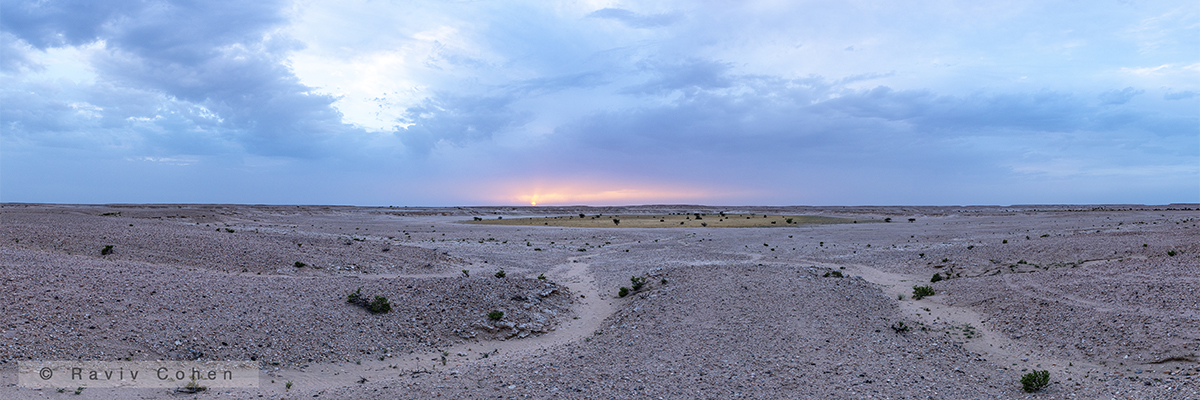
(pl. Widyan or Wadis)
Wadi meaning valley in Arabic, is an ephemeral watercourse, flash flooded during the rain season. Topographically, the wadi ecosystem lies enclosed within ancient rocky hills and low-lying areas of undulating rocky desert around Qatar. Rain water carrying soil particles, rocks and nutrients, drains from the tops of rocky hills and rocky desert into the valley in runnels, and if its course is blocked, water and soil end up and get deposited into the rawda or sabkha.
In geological times when the conditions in Arabia were wetter, widyan were draining into now dried-up rivers or alluvial plains originating from Saudi Arabia 5.3-1.8 mya, in southern Qatar, and from Iraq between 18,000-8,000 ya, in northern Qatar.
Runnels may be long or short, deep or shallow, line- or oval-shaped and sometimes they are collectively called wadi. Nutrient deposition and water passage, make runnels very fertile ground where diverse communities of plants take root, consequently attracting diverse communities of animals. Runnels are easily visible in the winter as green lines or oval patches in an otherwise rocky plateau. This unfurling biodiversity makes wadi, runnel and rawda the most productive terrestrial ecosystems.
Factors that determine the composition of the plant community in runnels are their size, depth within the wadi, and the type of deposited material that accumulates on their surface. The lily Dipcadi erythraeum is especially characteristic of small sandy runnels. Other plants include Aizoon canariense, Blepharis ciliaris, Anchusa hispida, and Glossonema varians. Helianthemum kahiricum, and lippii may be present and are indicator species for the desert truffles that crack the surface in runnels and rawda after the first rains. In deeper runnels, the impressive Leptadenia pyrotechnica may be found as well.
The animal community is often transient, using runnels as feeding grounds, while making their burrows in other parts of the wadi or in the nearby rawda and rocky desert. These may include birds of many feathers, migrant and local, Spiny-tailed Agamas, geckos, monitors, snakes, jerboas, camels, hedgehogs and others.
Threats leading to the loss of wadi and mortality to its inhabitants, may include construction activities, off-road driving, climate change phenomena and progressive desertification, among others.
© Chatziefthimiou AD. 2019. Terrestrial Environment: Wadi and Runnel. Qatar e-Nature.
Sources:
Whitford W, 2001
Edgell HS, 2006
Batanouny KH, 1981
Norton et al, 2008
Powell JT et al, 2015
Castilla AM et al, 2014







